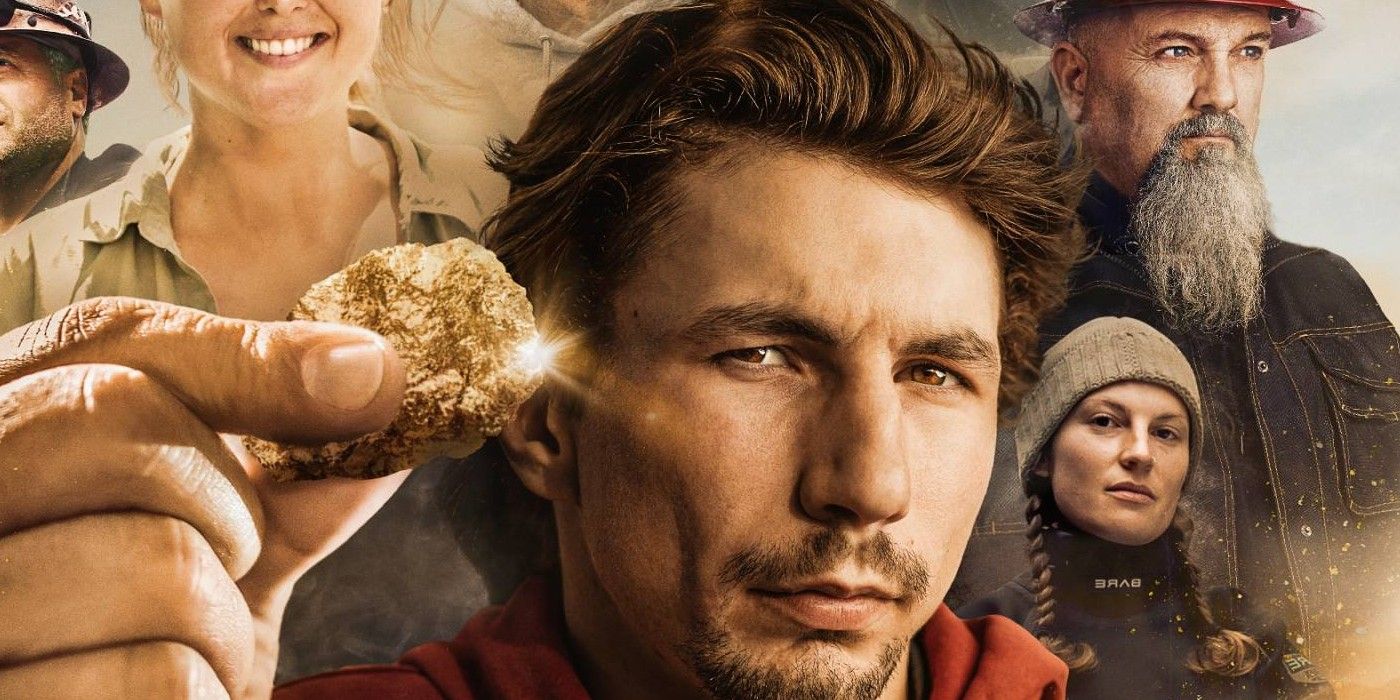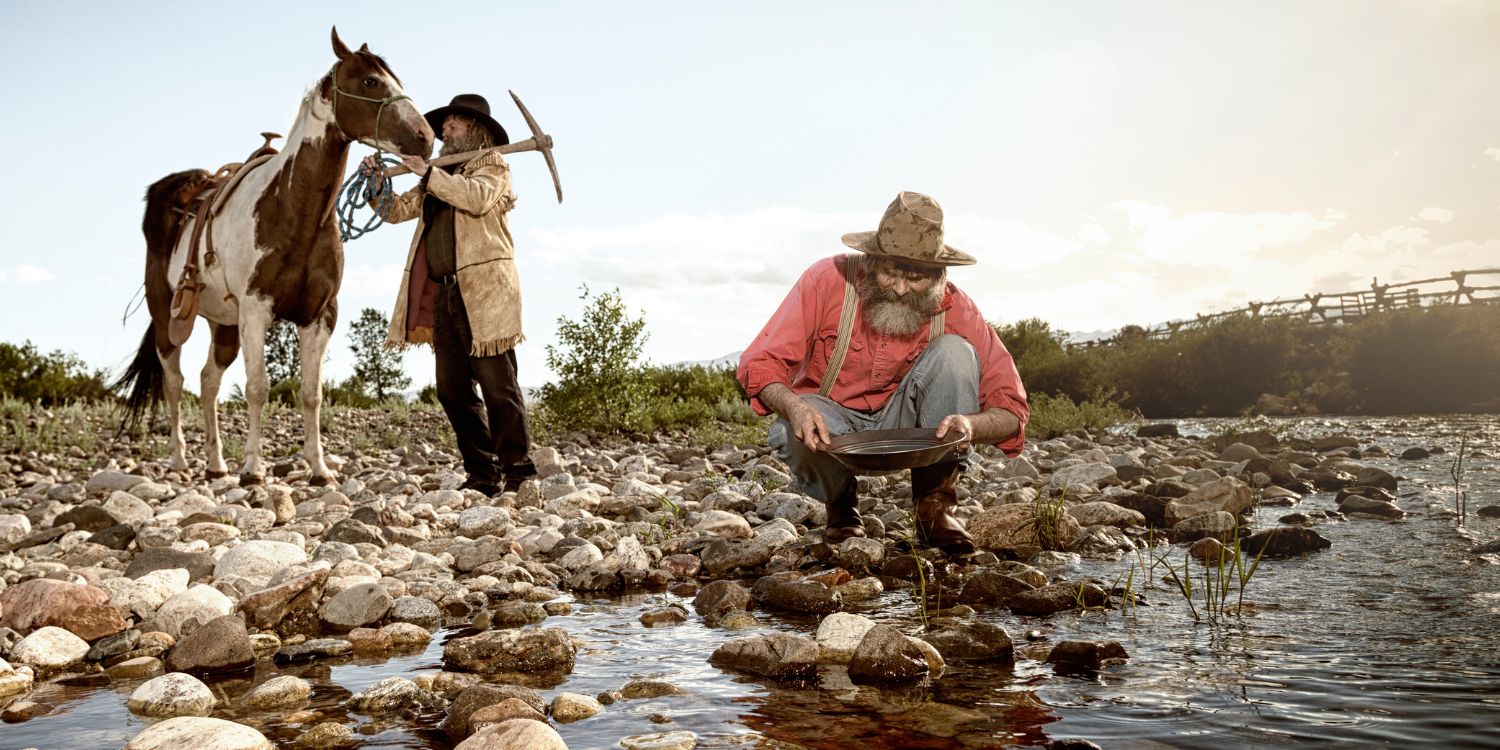Have you ever stopped to think about all that shiny gold from the Gold Rush? You know, the massive amounts of precious metal dug out of the earth during those exciting times. It's a question many people ponder, actually, what happened to all the gold from the Gold Rush? It's a rather fascinating story, one that involves a lot more than just people finding nuggets and then, well, that's it.
The Gold Rush, whether we are talking about California, Australia, or even North Carolina, certainly captured the imagination of countless folks. It was a time when dreams of instant riches pulled people from all corners of the globe, hoping to strike it lucky. Just imagine, a single discovery, like the one Marshall made on January 24, 1848, finding a gold nugget at a sawmill, could spark a huge movement.
Word of these finds, even when folks tried to keep things quiet, tended to spread like wildfire. This brought so many people, like the 20,000 Chinese who came to California for the "gold mountain" bonanza, hoping to get their share. So, with all that gold being pulled from the ground, it's pretty natural to wonder where it all went, isn't it?
Table of Contents
- The Initial Finds and Early Uses
- From Pockets to Prosperity: The Economic Ripple
- Building a Nation: Infrastructure and Growth
- The Global Reach of Gold
- The Short Life of Goldfields and Lingering Legacies
- Modern Echoes: Still Searching for Gold
The Initial Finds and Early Uses
When someone first got their hands on a bit of gold, what did they do with it? Well, basically, having some gold allowed a miner to pay for goods and services, which was a pretty big deal. You see, these folks often arrived with very little, so finding gold meant they could buy food, tools, and maybe even a place to sleep. It was a direct way to trade for what they needed, right there on the spot.
Many miners, particularly in the early days, didn't really hold onto their gold for very long. They used it to buy supplies from merchants who had set up shop near the goldfields. These merchants, in turn, would send the gold to larger cities or banks. This flow of gold started a whole new kind of economy in these boomtowns, which were, in a way, just popping up overnight.
For instance, San Francisco, a very famous Gold Rush boomtown, had only a few hundred residents in 1846. But by 1850, its population had truly exploded, reaching a size that was, well, much larger. This rapid growth was directly tied to the gold being found and then spent or shipped through the city. It's almost incredible how fast things changed, isn't it?
- Grand Hotel Riviera Sorrento
- Sophia Rain Spiderman Video
- Something In The Water 2024
- Paris La Defense Arena
- Maxs South Seas Hideaway
From Pockets to Prosperity: The Economic Ripple
The gold didn't just stay in the hands of the individual miners. Oh no, it moved through the economy, creating a massive ripple effect. A good deal of it ended up in banks, both local and those in bigger financial centers. These banks then used the gold as a basis for loans and investments, which, in some respects, fueled even more economic activity.
Some of the gold was also minted into coins. For more than 30 years, all gold coins issued by the U.S. Mint were actually produced using gold from North Carolina, where more than 30,000 people were mining for gold. This shows a very direct path for some of the discovered gold: straight into the national currency system. It helped stabilize money and allowed for greater trade, you know?
The wealth generated by the Gold Rush also led to significant private fortunes. Some individuals, like merchants or landowners who sold supplies and services to miners, became incredibly wealthy. They then invested their money in other ventures, like farming, manufacturing, or even starting new businesses. This meant the gold, even if it wasn't physically present, was still driving growth in many other sectors.
Building a Nation: Infrastructure and Growth
The sheer amount of gold discovered, and the people who flocked to get it, meant that places previously quite remote suddenly needed ways to connect to the rest of the world. The Gold Rush era, for example, saw very large investments in transportation. We are talking about the construction of roads, railways, and bridges, all built to move people and goods to and from the goldfields. This infrastructure was, in a way, a lasting legacy of the gold itself.
These transportation networks weren't just for moving gold or miners. They also opened up new areas for settlement and agriculture. Towns that started as rough mining camps often grew into established cities, thanks to the flow of gold and the people it attracted. San Francisco is a prime example, as we mentioned, growing from a small settlement to a major urban center in just a few years.
In Australia, the Victorian Gold Rush, starting in 1851 with rich deposits in Ballarat and Bendigo, truly launched the state into a new era. It had a profound impact on the country’s national identity, which the government had feared, but it also brought about immense development. The gold funded public works, government services, and helped establish new industries. It was, arguably, a turning point for the whole region.
The Global Reach of Gold
The gold didn't just stay within the borders of the countries where it was found. Word of the Gold Rush reached far beyond the Pacific, bringing people from all over the world. This global movement meant that a good deal of the gold also traveled internationally. Miners would send money home to their families, or they would return to their home countries, taking their earnings with them.
This flow of gold influenced global trade and finance. Countries that received this gold, whether through direct shipments or remittances, saw their own economies boosted. It helped to fund industrial expansion in Europe and elsewhere, as well as trade with Asian nations. So, in a way, the gold from a Californian stream could end up supporting a factory in England or a trading house in China, which is pretty amazing.
The demand for goods and services in the goldfields also stimulated international trade. Ships carried supplies from distant ports to meet the needs of the growing populations. These ships would often return laden with gold, creating a continuous cycle of global commerce. It truly was a global phenomenon, not just a local one, you know?
The Short Life of Goldfields and Lingering Legacies
It's important to remember that the life of many goldfields was, in fact, quite short. The richest deposits were often found relatively quickly, and then the easy pickings would dwindle. This meant that while a huge amount of gold was extracted, the boom periods didn't last forever. Miners would move on, searching for the next big strike, or they would return home, perhaps with less gold than they had hoped for.
However, the legacy of the gold, even after the rushes ended, continued to shape these regions. The roads, railways, and cities built during the Gold Rush remained. The cultural mix brought by the diverse groups of people who came to seek their fortune also left a lasting mark. This blend of cultures is still visible in many places today, actually.
Even now, the idea of finding gold still captures people's attention. Reality shows like "Gold Rush" on Discovery, which just aired its season 15 finale, continue to show teams, like Dustin and his crew, making one final attempt at finding gold nuggets in the raging waters of Alaska. Rick Ness, for instance, since his return to "Gold Rush" in 2023, has found again how great gold mining is, as he confessed in a 2024 interview. So, the spirit of the Gold Rush, in a way, lives on.
Some of the show's stars, like Todd Hoffman, who faced legal issues during the show, have even sparked speculation about returning to the series after purchasing a gold mine in Yukon. Fred Lewis, another Gold Rush personality, has been in touch with fans on social media after leaving the show. This ongoing interest in gold mining, and the personalities involved, shows that the allure of gold, and the question of what happened to it, remains a very current topic.
Frequently Asked Questions About Gold Rush Gold
Did all the gold from the Gold Rush get found?
No, not at all. A good deal of the gold was found, but much more remains in the ground, spread out in smaller, less accessible deposits. The Gold Rush was mostly about finding the easiest gold to get at. Modern mining techniques can extract gold from places that were too difficult or expensive for the early miners, you know.
What did miners do with their gold?
Miners used their gold to buy supplies, pay for services, and sometimes send money back home to their families. Some were able to save it, investing in land or businesses, while others spent it quickly. It was, in a way, their direct form of payment for everything they needed.
How did the Gold Rush change the places where it happened?
The Gold Rush caused massive population booms, leading to the rapid growth of towns and cities like San Francisco. It also led to huge investments in infrastructure, like roads and railways, and brought a very diverse mix of people and cultures to these areas. It changed economies and national identities, particularly in places like Australia, you see.
To learn more about the broader historical context of the Gold Rush, you might find some interesting information here: The History of the Gold Rush.
Learn more about gold's impact on our site, and you can also find out more about other historical events that changed the world.
- India Square Jersey City
- Sheraton San Diego Resort
- North Coast Music Festival
- Gotham Gym New York
- Mark Sloan Of Greys Anatomy



Detail Author:
- Name : Julien Nitzsche
- Username : ortiz.michelle
- Email : feil.francisca@gmail.com
- Birthdate : 2001-10-29
- Address : 623 Auer View North Carley, NE 22605
- Phone : +1.830.781.5113
- Company : Dibbert, Mueller and Mosciski
- Job : Government
- Bio : Tempora quas atque necessitatibus porro. Quidem aut nobis ipsa corrupti hic. Id exercitationem est assumenda commodi.
Socials
facebook:
- url : https://facebook.com/kshlerin2024
- username : kshlerin2024
- bio : Sint aut quo distinctio ut corrupti illum repellendus.
- followers : 3393
- following : 524
tiktok:
- url : https://tiktok.com/@ali_id
- username : ali_id
- bio : Sunt illum ratione ut qui consectetur modi animi.
- followers : 677
- following : 2373
instagram:
- url : https://instagram.com/kshlerin1992
- username : kshlerin1992
- bio : Qui repudiandae temporibus vel id qui cumque. Ratione quis adipisci sit qui aut fuga.
- followers : 5230
- following : 924

